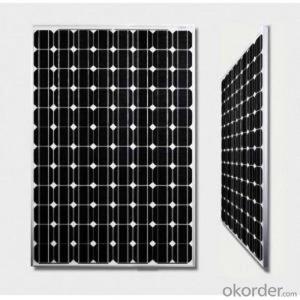Embarking on the journey towards energy independence can be both exciting and daunting. The thought of harnessing the power of the sun to fuel our daily lives is nothing short of revolutionary. But where do we start? The answer is simple: Solar Panels Kits. These kits are the gateway to a sustainable future, offering a practical, cost-effective, and environmentally friendly solution to the ever-growing energy demands of our homes and businesses.
The Allure of Solar Energy
Solar energy is a renewable resource that is both abundant and free. Unlike fossil fuels, it does not deplete with use, and it produces no harmful emissions. The sun’s rays are a gift that keeps on giving, and by installing solar panels, we can tap into this endless supply of clean energy. The benefits are numerous, including reduced electricity bills, a decrease in our carbon footprint, and a significant contribution to the fight against climate change.
The DIY Approach: Empowerment Through Knowledge
Taking the DIY approach to installing solar panels is more than just a cost-saving measure; it’s an empowering experience. It allows us to take control of our energy consumption and production. By understanding the process and components involved, we become more knowledgeable about the technology and its potential. This knowledge not only benefits our own energy setup but also equips us to make informed decisions and contribute to discussions about renewable energy.
Components of a Solar Panel Kit
A typical solar panel kit contains several key components:
– Solar Panels: The heart of the system, capturing sunlight and converting it into electricity.
– Inverter: Transforms the direct current (DC) produced by the panels into alternating current (AC), which is used to power our homes.
– Mounting System: Securely holds the panels in place and can be adjusted for optimal sun exposure.
– Wiring and Connectors: Essential for connecting the panels to the inverter and the home’s electrical system.
– Battery (optional): Stores excess energy for use during peak demand or when the sun isn’t shining.
Planning Your Solar Journey
Before diving into the installation, it’s crucial to plan your solar journey. This involves:
– Assessing Your Energy Needs: Understanding your household’s or business’s energy consumption patterns is the first step in determining the size and capacity of your solar panel system.
– Evaluating Your Roof: Not all roofs are created equal. The size, angle, and orientation of your roof can significantly impact the efficiency of your solar panels.
– Budgeting: While solar panels can pay for themselves over time, the initial investment can be substantial. It’s important to budget accordingly and consider financing options if necessary.
– Researching Incentives: Many governments and organizations offer incentives for going solar, such as tax credits, rebates, and grants. These can greatly reduce the overall cost of your solar panel kit.
Installation: A Step-by-Step Guide
The installation process can be broken down into several steps:
1. Site Preparation: Clear the area where the panels will be installed and ensure it’s clean and free of debris.
2. Mounting the Panels: Follow the manufacturer’s instructions to securely attach the mounting system to your roof.
3. Connecting the Wiring: Carefully connect the wiring from the panels to the inverter, ensuring all connections are secure and properly insulated.
4. Installing the Inverter: Place the inverter in a well-ventilated area, typically near the main electrical panel of the house.
5. Testing the System: Once everything is connected, test the system to ensure it’s functioning correctly and producing electricity.
6. Final Inspection: Have a professional inspect the installation to ensure it meets all safety and performance standards.
Maintenance and Troubleshooting
While solar panels require minimal maintenance, it’s still important to keep them clean and free of debris. Regularly check for any signs of damage or wear, and address any issues promptly. If your system isn’t performing as expected, troubleshooting can help identify the problem. Common issues include:
– Shadowing: Ensure no trees or structures are casting shadows on the panels.
– Dirt and Grime: Clean the panels to maintain optimal efficiency.
– Loose Connections: Check all wiring and connections for tightness and security.
– Inverter Problems: If the inverter isn’t functioning correctly, it can affect the entire system’s performance.
The Future of Solar Energy and DIY Kits
The future of solar energy is bright, with technological advancements continually improving the efficiency and affordability of solar panels. DIY solar panel kits are becoming more accessible, making it easier for individuals to take control of their energy future. As the world moves towards a more sustainable future, the role of DIY solar energy in our lives will only grow.
In conclusion, solar panel kits offer a practical and empowering way to achieve energy independence. By understanding the components, planning the installation, and committing to proper maintenance, we can harness the power of the sun and take a significant step towards a greener, more sustainable future. So, let’s roll up our sleeves and get started on our solar journey!

